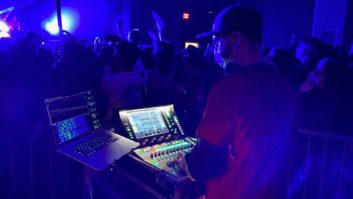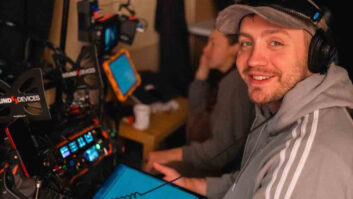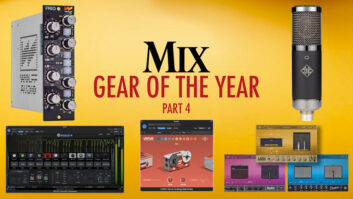
One of the questions most often posed to me over the years is this: How do you come up with so many product ideas? This question is often followed up with statements like, “I never knew I needed such a product until you showed it to me.” Funny enough, the source of inspiration often comes from simply discussing problems and solutions with customers, or slowing down long enough to ponder things.
Back around 1995, I was visiting sound reinforcement company Audio Analysts (now part of Solotech) in Colorado Springs, CO, and while touring the facility, I noticed they were building their own direct boxes. I asked then-partner Mario Lecesse about it and he explained that they liked Jensen transformer-equipped passive direct boxes because they were quiet. The guys at Audio Analysts would use leftover pieces of aluminum extrusion and mount the transformers inside with 1/4” jacks and XLRs. Mario said they hated to do it, but they had no other choice.
At that time, we were building large, 48-channel snake systems, and one day I asked myself, why so many channels? Looking at a stage, I counted 10 mics on the drums, five on vocals, three on guitars and bass and four on horns. This added up to 22 mics, so why 48 channels? It dawned on me: direct boxes.
The “Aha Moment” rang as clear as a bell. We were already importing Jensen transformers into Canada and using them in our high-end Convertible snakes. Soon after, in 1996, we debuted our first Radial direct box, the JDI—and sent the first one to Mario. The first tour to use a JDI was Bruce Springsteen and our first endorsee was bass player Mark Egan.
Another product development milestone was the Radial SW8 auto-switcher for backing tracks. I was visiting Wigwam, one of Britain’s top sound reinforcement companies, and while looking around the facility, noticed a number of large racks that stood about 5 feet tall. Being inquisitive by nature, I asked what they were. Wigwam had built a custom backing track switcher for George Michael that enabled them to switch from a live orchestra to tracks, should the need arise. My understanding was that they would engage the services of local orchestras while on tour, and if the orchestra was not up to par, they would essentially “lip sync” the performance while having the prerecorded London Symphony played over the P.A.
This got me thinking about how more bands were traveling with backing tracks to lower costs and mitigate problems associated with computer crashes. Everyone recalls the Milli Vanilli fiasco. I figured that if Wigwam was using such a device, so would others. By incorporating a signal gate into the SW8, a steady-state signal could be used to activate the auto-switching circuit and seamlessly jump from one playback system to another. The SW8 not only gained traction with concert touring acts like The Eagles and Madonna, it found a home on the Super Bowl halftime show, American Idol and the Grammys. When I ask sound engineers about the SW8, they usually respond with, “That thing saved me.”
Probably the best source for product ideas has been the stage techs, not the artists. Most artists are not technically savvy; instead, they rely on their techs to make things work. As such, going backstage to chat with the techs has always been way more productive than chatting with the artist. The techs are the people who have to deal with the problems and with the ever-changing landscape of technology, so they are a wealth of problem-solving opportunities.
A side benefit of getting to know the techs is that they migrate from one tour to the next and usually bring proven solutions with them along the way. This can sometimes lead to endorsements—an important and powerful tool that is essential in creating brand awareness. Although there were many direct box makers before Radial, such as Countryman and Whirlwind, we aimed to offer the scope or selection to create a category. Whirlwind was probably the closest before Radial came along. By constantly pushing quality, we managed to create a strong following that continues today.
Peter Janis, former CEO of Radial Engineering, is a 40-year veteran of the music industry. Exit-Plan, his consulting firm, assists business owners to build their companies and prepare them for eventual sale.







